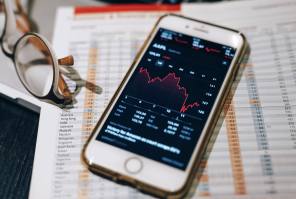

One of the key decision makers at the Bank of England has revealed why he voted for UK interest rates to rise.
Michael Saunders is one of the four external members of the Bank of England’s Monetary Policy Committee (MPC). External members are so called because they do not work as employees of the central bank. Mr Saunders day job is as an economist with Citigroup.
Mr Saunders said in a speech today (31 August) at the Park Plaza, Cardiff, that the Bank of England has been trying to achieve an “appropriate trade-off” between preventing inflation from rising too fast, and boosting the economy, which is currently operating at below its capacity.
He said the terms of the trade off have shifted markedly of late, as unemployment has fallen and the output gap in the economy has narrowed.
Economists define the output gap as the space between the potential growth an economy can achieve and the level it is actually achieving.
The Bank of England define full employment as being achieved when the jobless rate is 4.5 per cent. That number was revised down from 5 per cent last year as the central bank sought to take into account the number of people in the labour force working in irregular employment, or who had retired early.
Mr Saunders noted the current rate of unemployment in the UK is 4.4 per cent, which is 0.1 per cent below the central bank’s definition of full employment.
Meanwhile, UK inflation is 2.6 per cent, which is above the Bank of England’s target rate of 2 per cent.
That prompted Mr Saunders to say there is no need for the Bank of England to “”have its foot “quite so firmly on the accelerator” to drive economic growth by having record low interest rates.
He said: “A modest rise in rates would help ensure a sustainable return of inflation to target over time.”
Mr Saunders said while he is conscious of the risks to the economic outlook of the UK’s exit from the European Union, he said he thinks the implications for the wider economy “could go either way”.
Mr Saunders is one of the nine people who have a vote on UK interest rates at the Bank of England, the most recent meeting recorded a 6-2 vote against putting rates up (there was one vacancy on the committee at that time). Saunders has long been an advocate for putting rates up.
The market is currently pricing in a 50 per cent chance of interest rates rising within a year, according to Ben Brettell, senior economist at Hargreaves Lansdown.
Tom Walker, who runs the £240m Martin Currie Global Portfolio Trust, said putting interest rates up would lead to “stagflation” in the UK.
Stagflation means an economy having persistently higher than target inflation, with high unemployment and low levels of economic growth.
Ben Edwards, fixed income manager at BlackRock said: “The overwhelming risk for the Bank of England is one where a premature rate hike slows the economy, potentially weakening the pound, with activity data soft, real wages stretched and Brexit uncertainty high.”
He said the data shows economic activity is sluggish, real wages declining and Brexit uncertainty to be high, not conditions in which rates should rise.
Mr Edwards said the only reason to put rates up would be if consumer borrowing got out of hand, and he believes the bank of England have other tools to control this.
Mr Saunders speech can be seen in the context of data from Fundsnetwork which showed that the IA sterling corporate bond sector was the biggest seller on its platform in July.
Low inflation means the real value of the income earned on the bonds is worth more, while interest rates staying low reduces the chances of investors incurring a loss of capital on the bonds they own.
Jonathan Davies, who runs Jonathan Davis Wealth Management in Hertford said last year he moved away from assets which perform well in a world of low inflation, notably government bonds, and towards emerging market and energy assets, which do well when inflation is allowed to rise.
David.Thorpe@ft.com



